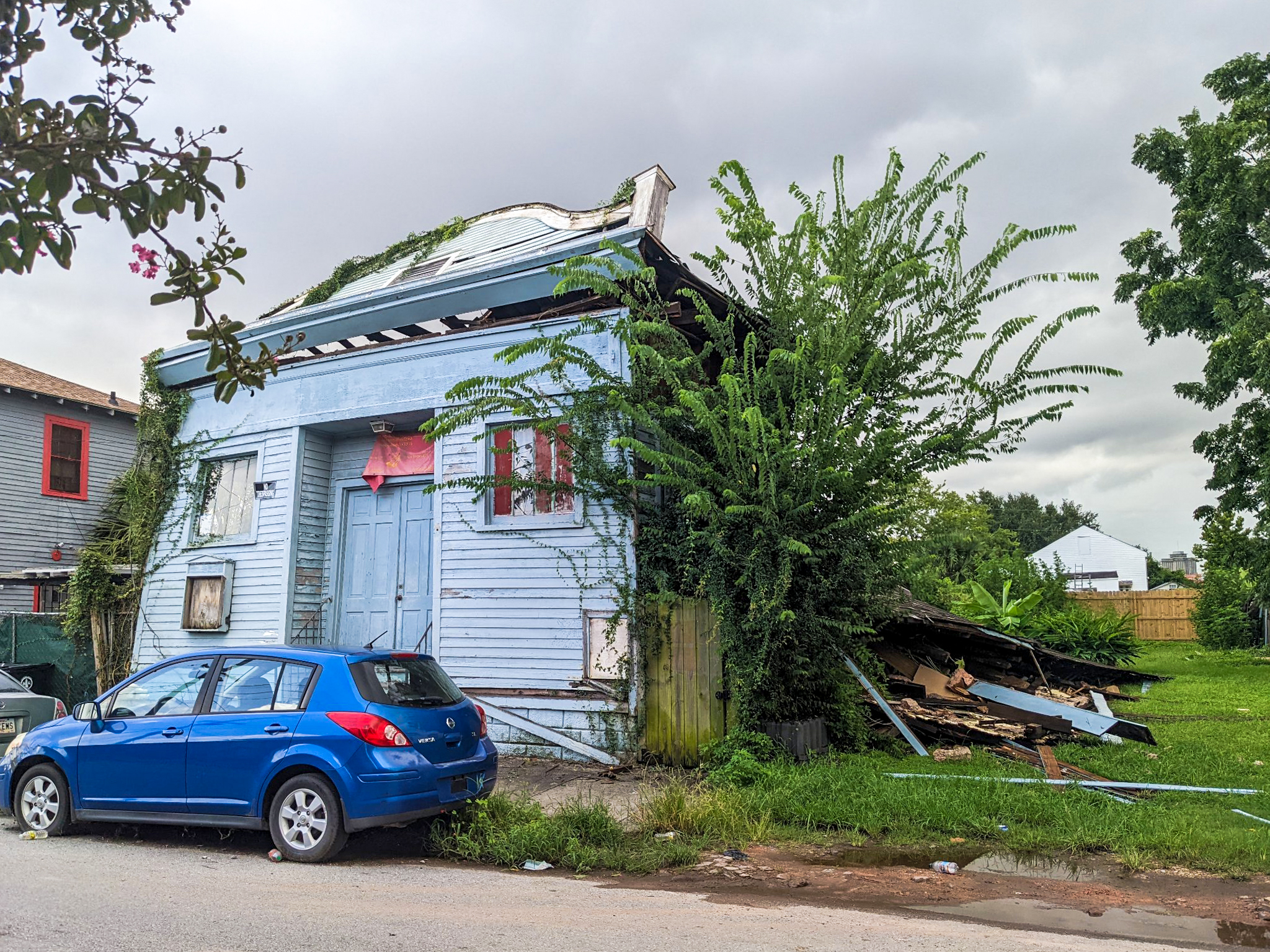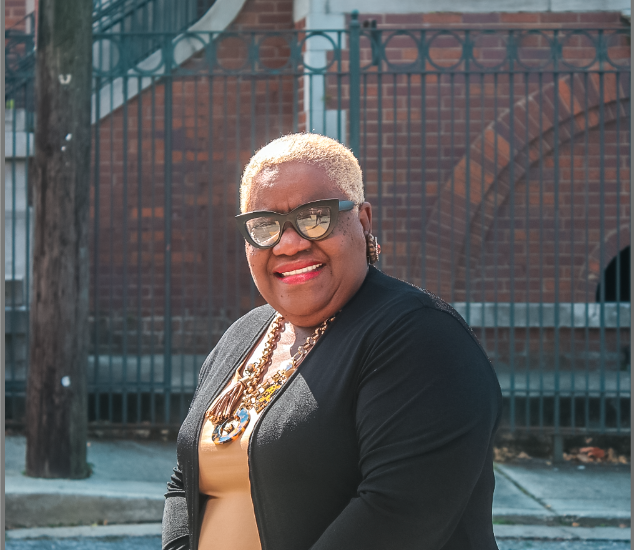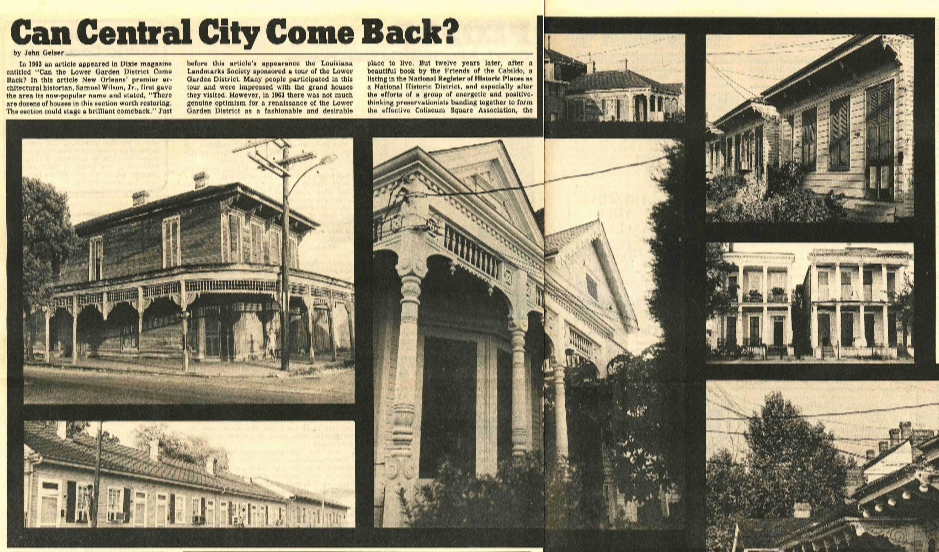When the Green Project began 15 years ago, it was little more than a neighborhood paint-recycling effort.
Today, the nonprofit operates a successful warehouse in Bywater where it resells building materials it has salvaged. The warehouse is open seven days a week, employs 15 full-time staffers, is a dropoff point for paper and aluminum recycling and houses Recycle for the Arts, which provides art materials to schools, artists, galleries and other art programs.
With plenty of post-Katrina rebuilding still under way in a city that prides itself on its unique architectural heritage, the Green Project’s mission to “create a culture of creative reuse by building a marketplace for used materials” could be reaching a zenith.
And the Green Project is not alone. Just next door is the Preservation Resource Center’s year-old warehouse store, supplied with salvaged materials from Rebuilding Together, an arm of the PRC that conducts home deconstructions.
Across St. Claude Avenue at Royal and Press streets, Habitat for Humanity has a furniture, appliance and building material resale shop of its own.
Several months ago, a new salvage warehouse, the Old City Building Center, opened in Mid-City and has been growing steadily ever since.
What has evolved is a vibrant community of nonprofits working to salvage and resell building materials. Each operates with a slightly different focus on architectural preservation and environmental sustainability, so instead of viewing one another as competitors, they have formed a cooperative network.
Older and stronger
For-profit architectural salvage depots, such as The Bank Architectural Antiques and Ricca’s Architectural Sales, have been supplying preservation-minded home-builders and renovators with historically rich materials for decades. But the recent flowering of nonprofit salvage warehouses suggests that for many New Orleanians, new wood products simply cannot replace the quality and character of time-tested, old-growth materials.
“Newer woods are hollower or lighter-weight, ” said Dawn Falgout-Loebig, director of the Old City Building Center. “The knock on (new wood), versus the knock on a good, solid piece of wood, the old wood just has a better sound, and it absorbs more sound.”
Old wood is harder and denser for two reasons, Falgout-Loebig said. First, many old New Orleans homes undergoing deconstruction contain old-growth hardwoods, such as cypress and heart pine. Second, woods continue to harden even after they have been cut, through a process called curing. Curing closes the wood’s pores, making it denser and less vulnerable to damage.
“By age, it gets harder, ” she said.
As a result, even though some of the materials salvaged in home deconstructions had been inundated by flooding from the levee breaches, they did not sustain water damage because of the natural strength of the wood, Falgout-Loebig said.
Lots to save
Deconstructions can strip a home of not only the obvious architectural goods, such as ornamental pieces, brackets, mantels, doors and windows, but also floorboards, siding, joists and rafters, said Phyllis Jordan, president of the board for the Green Project.
Each of the three organizations relies on donated materials, either through its own deconstruction program or from outside contractors and nonprofits.
The PRC warehouse store is supplied with materials salvaged from the efforts of Rebuilding Together, which for the past 18 months has received financing from the Federal Emergency Management Agency for its house deconstructions.
The Habitat ReStore, established in July 2003 by the New Orleans Area Habitat for Humanity, is supplied largely through individual donations of reusable goods, such as leftover paint, doors or windows or electrical or plumbing components. It also offers home pickup for large materials. In addition to providing a variety of building materials similar to the Green Project’s, the ReStore also sells used appliances and furniture. Proceeds go back into local Habitat projects.
The Old City Building Center received a $110,000 grant from the nonprofit MercyCorps to do home deconstructions, but also accepts outside donations. The Green Project relies mostly on a strong network of contractors to supply its materials.
“We try to maintain contact with (the contractors), to make sure it’s easy for them, making sure they’re putting materials aside so they don’t get damaged, ” said Jordan.
Differing priorities
Each group varies slightly in its acquisition methods, as well as in guiding principles.
The PRC’s priority is preservation and architectural integrity, but it also recognizes the environmental benefits of deconstruction.
“A lot of our mission is to preserve and revitalize the homes in the community, and it fits hand-in-hand, ” said Sean Vissar, deconstruction manager for the PRC’s Rebuilding Together. “Also, we’re trying to become a greener organization, and this is one of the greenest things you can do: reuse existing materials. That’s one of the worst things to watch, seeing these incredibly old houses be demolished and the materials tossed in a Dumpster.”
The Green Project, conversely, is motivated primarily by sustainability and environmental sensitivity. Whereas the PRC warehouse store is more selective in its acquisitions, the Green Project will put up for sale any usable material in an effort to keep it out of a landfill.
For example, flooring comes in three quality categories, which are priced accordingly. Discarded, mismatching cabinets or shelving units are not passed over, but are given a fair chance to sell with a low sticker price.
“Our mission is environmentally focused, ” Jordan said. “We may take materials that other people won’t take, that aren’t hugely gorgeous, but nonetheless, that is an environmental issue and a landfill issue. You’re taking something we’ve already invested the carbon in, and reusing it.”
The Old City Building Center seems to be focusing on job training. It’s a member of the Louisiana Green Corps, a coalition of local nonprofits teaching trade skills to underprivileged young adults. The program is a part of the Louisiana Conservation Corps, supported by a grant from the Department of Labor. Students with the Old City Building Center will learn basic construction skills, as well as specialized skills in house deconstruction and reconstituting salvaged materials, Falgout-Loebig said.
“Quite frankly, I’m tired of seeing all these carpetbaggers come in and take all these construction jobs, when you’ve got a room full of kids ready to work, ” she said.
Same overall goal
The landscape for salvage resale may seem crowded, but the depot leaders all say a healthy collaboration has emerged.
“It makes it very interesting to have these partnerships with the other depots, ” Falgout-Loebig said. “You play off each other, and learn from each other. Everyone tries to share knowledge.”
With the PRC’s specialized assortment of architectural pieces and the Green Project’s all-inclusive smorgasbord of building materials sitting side by side on Marais Street, not to mention the Habitat for Humanity ReStore just a couple of blocks away, customers are perhaps more likely to take the trip to Bywater, knowing they have not just one, but three, options for finding a gem.
“I really think having the (PRC warehouse and the Green Project) next door to each other helps, because people can go to both of them, ” Jordan said. “Each of us has a slightly different mission for wood salvage.”
“We’re in it together, because often people come to us looking for the Green Project, or vice-versa, and we’ll just send them to each other. It’s been a great partnership.”





